I am trying to replicate the model from forecasting with dynamic regression models and I can't match the output in R using the arimax function from the TSA library. I am able to get pretty close to the result with SAS but I want to use R and hoping someone knows how to code the arimax function to achieve this. I have found the function to have issues (normally rooted from arima and optim) converging properly, but in this case a model is returned, but the parameters are way off.
The data is the first 140 observations from the sale sand lead series from Box and Jenkins in the astsa library.
Here is the snippet from the book showing their results (again, I could get close with SAS) and the code used with R (and the results). One thing I note is in the help file for arimax() there is recommendation to "mean-delete" transfer function covariates. I am not sure what this means and not sure if that is part of the issue.
From the book:

and here is the R-code:
library(TSA)
library(Hmisc)
library(astsa)
sales_140<-window(sales,end=140)
lead_140<-window(lead,end=140)
mod<-arimax(window(sales_140,start=4),order=c(0,1,1),
xtransf = window(Lag(lead_140,3),start=4),transfer = list(c(1,0)),
xreg=data.frame(seq(1:137)),method="ML")
mod
#Series: window(sales_140, start = 4)
#ARIMA(0,1,1)
#Coefficients:
# ma1 seq.1.137. T1-AR1 T1-MA0
# 0.5974 0.3322 0.0613 2.8910
#s.e. 0.0593 0.1111 0.0275 0.1541
#sigma^2 estimated as 0.6503: log likelihood=-163.94
#AIC=335.87 AICc=336.34 BIC=350.44
Here is the SAS code:
proc arima data=BL;
identify var=sales(1) crosscorr=lead(1);
estimate q=1 input=( 3 $ ( 0 ) / ( 1) lead) method=ml;
forecast out = out1 lead = 0;
run;
and the estimates:
